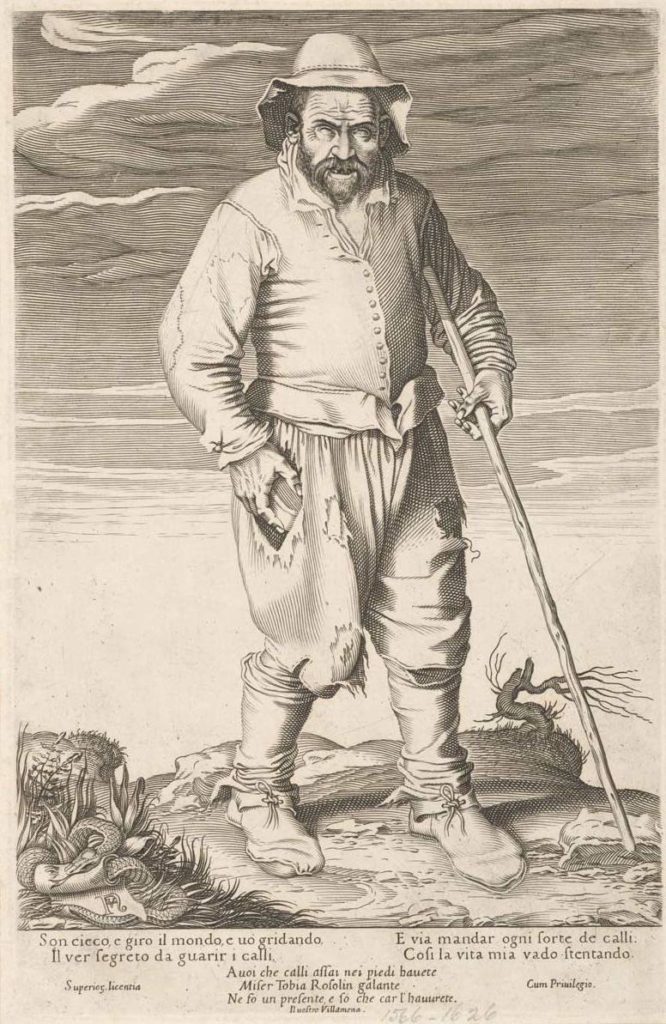Francesco Villamena’s engraving Cieco da rimedis per i calli follows a genre depicting street criers and itinerant traders that became popular in Italy in the 1580s. The artist Annibale Carracci (1560–1609) produced a series of approximately 75 individual drawings of the street vendors of Bologna. All but one of these drawings is lost, but they are known to us through their engraved equivalents by Simon Guillain (1618–58) which were printed in 1646. The series is known as the ‘trades of Bologna’ (Arti di Bologna) and in plate 55 of this set, there is a blind man with a remedy for corns.
Possibly Carracci saw this individual and drew him from life in Bologna. Yet Villamena was located at Rome and it is uncertain whether he based his engraving on the Carracci drawing or on a real person. In this engraving is evidence that it was possible for both the subject himself, and through the vehicle of the press, for imagery to travel.
Villamena’s figure is recognisably blind from the cane he carries and the blank appearance of his eyes. From the attention given to the great rends and repairs of his tattered attire, we also know that he is poor. Villamena locates the blind man as a traveller on a dirt road, which is unlike the Carracci image as there is no architecture, and no suggestion of a city. There are further differences between the two images: particularly their tone and in Villamena’s engraving, the addition of the inscription under the image.
Tobia Rosolin has potential to take advantage of his audience, for he is selling a dubious medical remedy. As such, the engraving is an example of medical charlatanism or the practice of medicine without training or licensing. Rosolin was one of many roaming peddlers without a permanent business and therefore not far removed from a vagrant beggar. He was nevertheless proactive to earn money from gullible customers, and with much foot traffic inferred by the image, it would not seem surprising if the need for corn removal were high.
Kerrianne Stone, University of Melbourne
